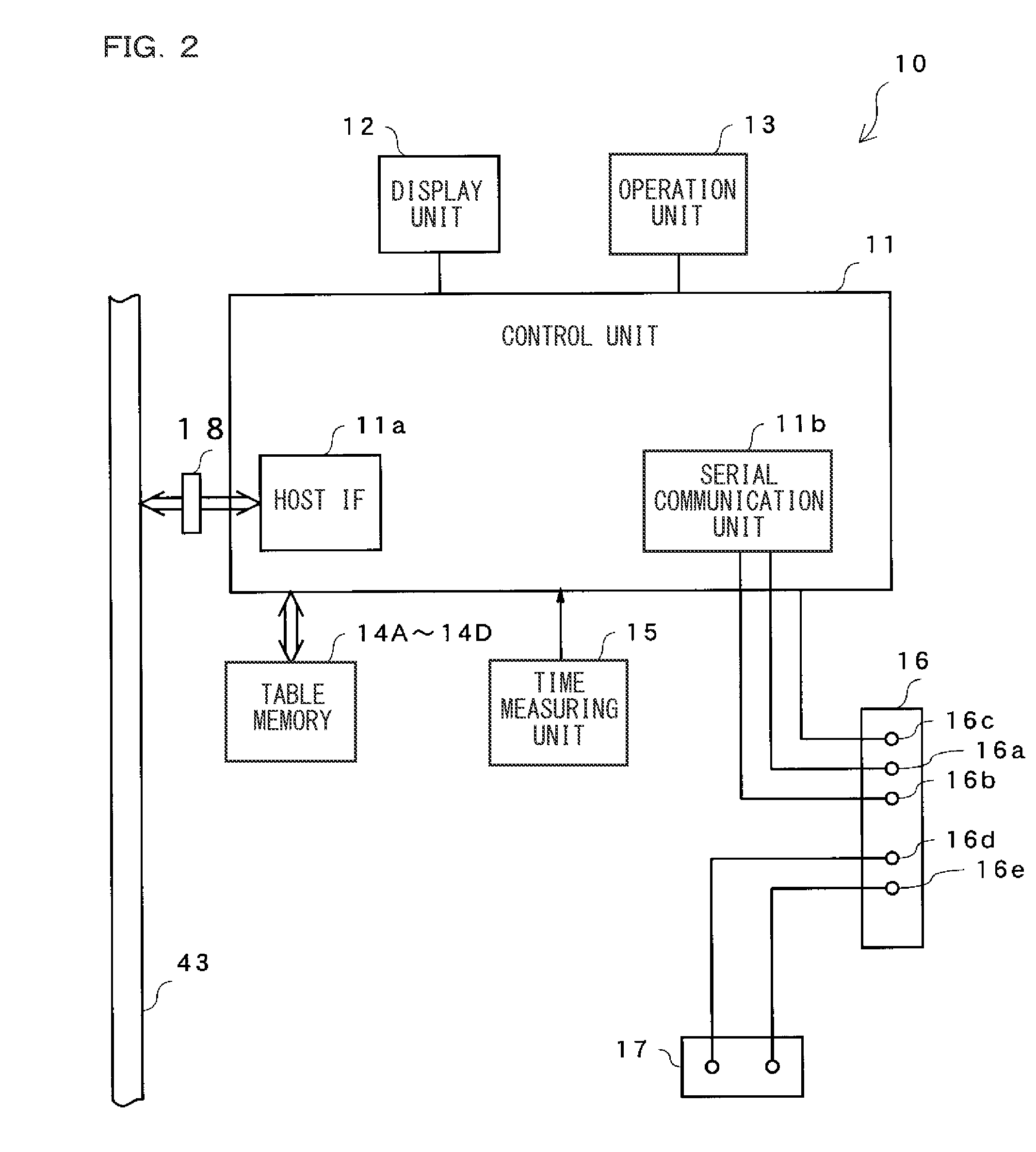Continuously-Arranged Sensor System, Network Unit, and Sensor Unit
- Summary
- Abstract
- Description
- Claims
- Application Information
AI Technical Summary
Benefits of technology
Problems solved by technology
Method used
Image
Examples
first embodiment
[0054]FIG. 1 is a figure showing an entire configuration of a continuously-arranged sensor system according to the first embodiment of the present invention. The continuously-arranged sensor system 1 includes at least one sensor unit connected to a network unit 10. In this embodiment, a series of sixteen sensor units 30-1 to 30-16 are connected to the network unit 10. These units are electrically connected via a serial transmission line 41 including at least two serial transmission lines. Hereinafter, a direction toward the network unit 10 is referred to as upstream direction, and a direction toward the sensor unit 30-16 is referred to as downstream direction. The network unit 10 is adapted to collect signals transmitted from the sensor units 30-1 to 30-16 and to transmit a necessary signal to a host control apparatus 42, and is connected to the host control apparatus 42 via a feed bus 43.
[0055]Subsequently, each unit will be described in detail. FIG. 2 is a block diagram showing an...
second embodiment
[0093]Subsequently, a continuously-arranged sensor system according to the second embodiment of the present invention will be described. The configurations of the present embodiment are the same as those of the first embodiment except for the data contents stored in the table memory 14B. In the present embodiment, the network unit 10 does not transmit the data transmission command to each sensor unit. When the determination signal changes, the determination unit 31b of each sensor unit transmits an ON determination signal or an OFF determination signal to the network unit 10 via the serial transmission line 41. The control unit 11 of the network unit 10 receives the change of the determination signal from any one of the sensor units, the control unit 11 simultaneously writes, to the table memory 14B, either ON state or OFF state and the time obtained from the time measuring unit 15 indicating a time at that moment as a change time. Therefore, the table memory 14B can be generated as...
third embodiment
[0096]Subsequently, a continuously-arranged sensor system according to the third embodiment of the present invention will be described. The configurations of the present embodiment are the same as those of the second embodiment except for the data contents stored in the table memory 14C. In the present embodiment, when the determination signal changes, the determination unit 31b of each sensor unit transmits an ON determination signal or an OFF determination signal to the network unit 10 via the serial transmission line 41. The control unit 11 of the network unit 10 updates the table memory 14C when the control unit receives the change of the determination signal of the sensor unit. More specifically, as shown in FIG. 4C, a rising time at which the output of each sensor unit is turned on and a fall time at which the output thereof is turned off are stored. When a further change of the output state is transmitted via the serial transmission line 41, the rising time and the fall time ...
PUM
 Login to View More
Login to View More Abstract
Description
Claims
Application Information
 Login to View More
Login to View More - R&D
- Intellectual Property
- Life Sciences
- Materials
- Tech Scout
- Unparalleled Data Quality
- Higher Quality Content
- 60% Fewer Hallucinations
Browse by: Latest US Patents, China's latest patents, Technical Efficacy Thesaurus, Application Domain, Technology Topic, Popular Technical Reports.
© 2025 PatSnap. All rights reserved.Legal|Privacy policy|Modern Slavery Act Transparency Statement|Sitemap|About US| Contact US: help@patsnap.com



